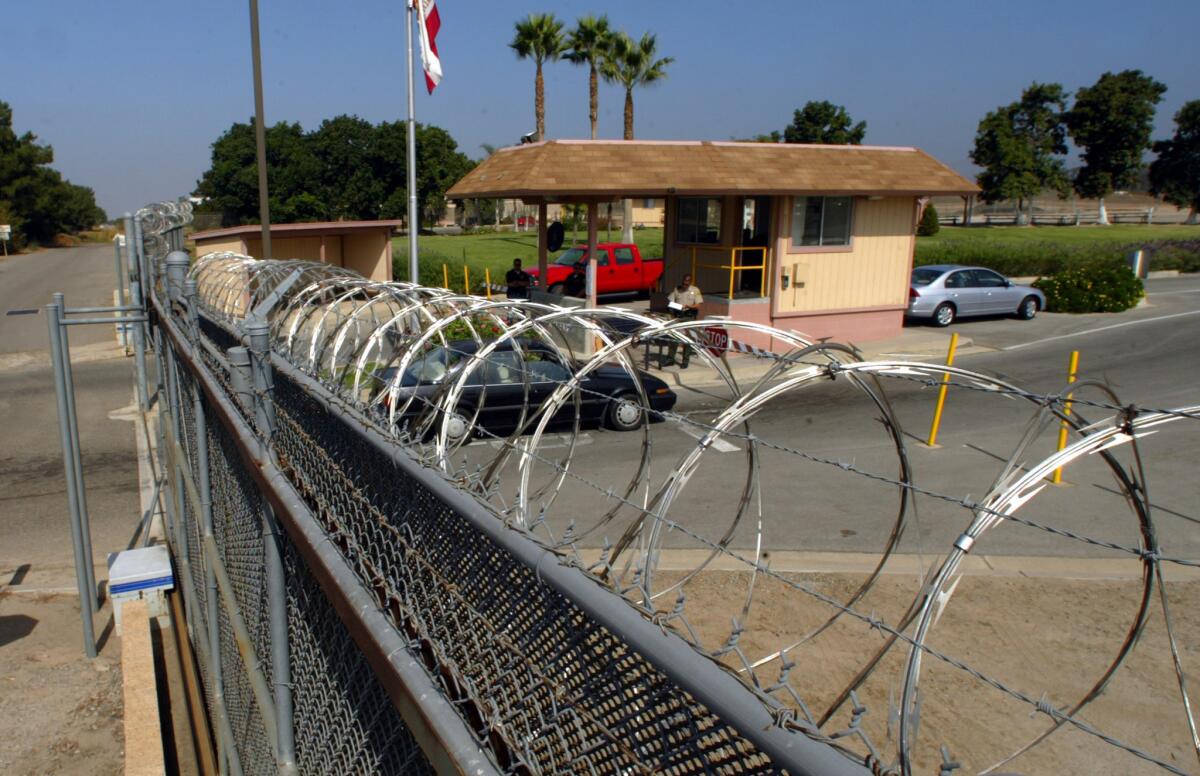How an asylum-seeker from Ghana ended up living in an Orange County jail

- Share via
The 29-year-old fled his home in Ghana, he said, because he feared for his life after protesting against female genital mutilation.
He flew to South Africa and made his way through Ecuador, Colombia, Central America and Mexico before reaching the United States and, he thought, safety.
But eventually he found himself in Irvine where, instead of living the American dream, he was housed in the James A. Musick Facility — a jail.
At the border in 2014, he declared himself an asylum-seeker, which triggered his arrest.
“They said: ‘Put your hands on your head, don’t move, stand still!’ Then they handcuffed us,” the man said.
“All my spirit went away from me. I thought, ‘Why? What did I do?’ … If you told someone in Ghana that if you go to the United States to seek asylum you’ll be arrested, there’s no way they would believe it.”
He was held for more than a year, first at the Theo Lacy Facility in Orange and then at Musick, as he awaited hearings to determine his eligibility for asylum.
Detention, said Virginia Kice of U.S. Immigration and Customs Enforcement, is intended “to make sure people comply with the immigration court and to ensure they’re available for a final order of removal so we can carry out their repatriation.”
The Ghanaian — who requested anonymity because he continues to fear deportation — said the year he spent locked up was confusing, depressing and isolating. There were few people he could talk to; everyone seemed to be from a different country and spoke a different language.
“I was thinking, maybe they wanted to put me in jail forever,” he said.
The James A. Musick Facility is tucked away between Alton and Bake parkways, just a few miles from the Irvine Spectrum Center. The sprawling, 100-acre minimum-security jail is barely noticeable from the road.
Immigration detainees and prisoners are housed in separate but similar accommodations: each group in a large, open room filled with rows of bunk beds, with communal showers and restrooms in the back. The quarters are adjacent to an outdoor recreation yard with a volleyball net and basketball hoop.
Through a large wrap-around plexiglass window, jail officials can see everything — men in bright-yellow jumpsuits chatting mostly in English, Spanish and Chinese, playing cards, huddling under the few trees outside to escape the blazing sun.
Musick holds about 1,000 low-level criminal offenders and about 300 immigrant detainees, male and female.
But officials are quick to point out that detainees have more privileges than inmates, including more outdoor recreation time, greater access to an on-site law library, a clean change of clothes each day and the opportunity to work as a gardener, barber or library orderly for $1 a day.
“On the books, detention is a nonpunitive administrative procedure,” said Caitlin Patler, a fellow at UC Irvine’s department of law and criminology. “But in practice, people are being held in jails for long periods of time, and they’re subjected to the same sorts of restraints that anyone who goes to jail is subjected to.”
In 2010, the Santa Ana Jail and Theo Lacy and Musick facilities became contractors for ICE, agreeing to designate a certain number of beds exclusively for immigrant detainees. Those who are held typically fall into two categories, Patler said.
The first are asylum-seekers — fleeing their home countries out of fear of persecution or violence — who were taken straight from the border to detention to await hearings to determine their eligibility.
The second are immigrants, in the country either legally and illegally, who were living in the United States when an arrest triggered an immigration hearing.
Guiding ICE’s decision on whom to put in detention is a 2014 memo that prioritizes holding immigrants whose crimes constitute threats to national security or public safety.
But that’s not how it always works in practice, Patler said. “The bar is set pretty low in terms of the types of things you have to do to trigger mandatory detention,” she said.
Unlike those in the criminal justice system, immigrant detainees have few rights, including legal representation.
“Public defenders are not available in immigration court,” Patler said. “Unless they can pay for a private attorney, most detainees end up representing themselves in court, which, you can imagine for a non-English speaker or someone who’s not educated, can be a sad sight.”
As a result of a 2013 federal appeals court ruling, anyone in the Central District of California — which includes Orange County — who is detained for six months or longer will automatically receive a bond hearing.
The asylum-seeker from Ghana went to court 10 times before his release in 2015. Although he still faces the threat of deportation, he said, he’s trying to establish a normal life, doing things like opening a bank account and securing a work permit.
But mostly he’s just happy to be out of Musick.
“Being in jail is very, very hard,” he said.
Kandil writes for Times Community News
ALSO
Family of 14-year-old boy shot by LAPD calls for release of body cam footage
Ex-L.A. County Sheriff Lee Baca pleads not guilty to new obstruction charges
California gang database plagued with errors, unsubstantiated entries, state auditor finds
More to Read
Sign up for Essential California
The most important California stories and recommendations in your inbox every morning.
You may occasionally receive promotional content from the Los Angeles Times.













